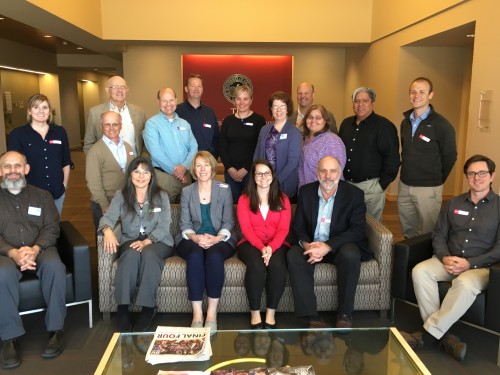Workshop on ecological drought with the South Central Climate Science Center in Norman, Oklahoma
Brianne Walsh ·In March, Bill Dennison, Simon Costanzo, and I travelled to Norman, Oklahoma for a workshop on ecological drought, part of an ongoing project with the USGS National Climate Change and Wildlife Science Center. This was the third in a series of eight workshops to be held at each of the nation’s eight Climate Science Centers focusing on ecological drought. Summaries of previous workshops held at the Alaska Climate Science Center [pdf] and North Central Climate Science Center [pdf] are available on IAN Press.
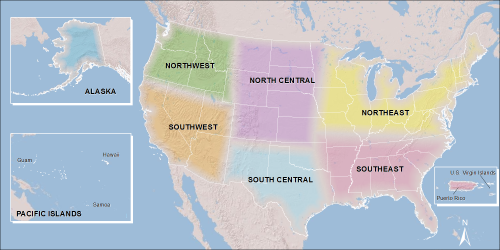
The South Central Climate Science Center includes Texas, Oklahoma, New Mexico, and portions of Colorado and Louisiana. Because of this geography, the CSC covers a wide range of ecoregions, from the Rocky Mountains in the Northwest to the marshy coastlines of Louisiana. The region experiences gradients in temperature (North to South) and precipitation (East to West), with higher precipitation falling in the East, and higher temperatures in the South.
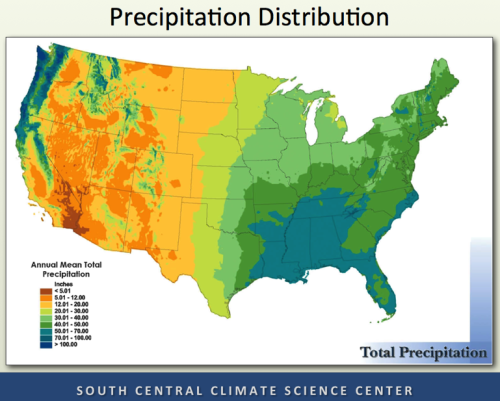
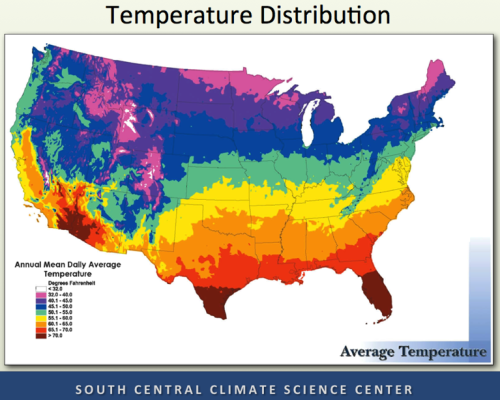
To set the stage for the workshop, six speakers outlined the issues of drought and climate change, and provided a basis for the conversations that would evolve. Renee McPherson, Roger Fragua, Caiti Steele, John Zak, Barney Austin, and Mike Osland provided an in depth overview of drought and related issues within the region, and set the stage for continued conversations.
Several main themes emerged from these presentations and the conversations that followed:
- Drought is not a new feature of the South Central region, however the 2011 drought set a new precedent. Future climate projections for the South Central region include increased precipitation in the northern great plains, and less precipitation in the southern great plains. During the 2011 drought, this precipitation pattern was observed, with exceptional drought occurring in the southern plains, and the wettest Spring on record in the Northern plains. This coincided with the hottest summer on record across the region, doubling the average water loss rates, and record rainfall and flooding in the North.
- The South Central US has a strong cultural history. Within the tribal cultures throughout the region, crops are not just used for food, but also part of ceremony and cultural preservation. Historically, tribes are the institutional memory of drought, and products of adaptation based on changing climates.
- Flash droughts are an increasingly important issue. Flash droughts occur when drought conditions intensify rapidly in the spring and summer. Combined with a lack of rain, spring and summer heat waves lead to severe drought impacts in a matter of weeks rather than months. This results in a rapid decrease of soil moisture and can have detrimental effects on water supplies, agriculture, and ecosystems.
- Water availability varies from the mountains to the coast, but its importance and downstream influences are applicable across the entire region. In the Rio Grande basin, snowpack has been declining for the past 70 years. River flow is highly dependent on snowpack, which influences down stream ecosystems. In the Red River basin, there is uncertainty in future flows, but many (not all) of 27 model simulations show parts of the basin becoming drier in the future.
- Drought impacts coastal systems. Changes in abiotic regimes reduces the performance of foundation species and leads to ecological regime shifts. This changes the supply of ecosystem goods and services provided by coastal regions, and leads to reductions in resilience.
Building on these main themes, participants identified the values within the South Central US and the threats facing those values. The top three values (as voted on by workshop participants) included water quality, culture, and functional ecosystems.
The top threats were identified as poor governance, economic drivers, and land use change. For each of these three values and three threats, participants outlined the top three strengths and weaknesses. This helped set the scene for the activities of day two, planning ahead in regards to data gaps, next steps, and opportunities in relation to each of the values and threats.
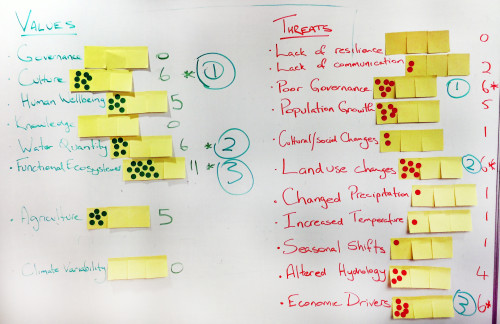

We concluded the workshop by storyboarding a four-page newsletter that will further describe each of the themes in the South Central United States, as well as the values and threats identified by workshop participants. Stay tuned to IAN Press for the release of the workshop newsletter!
